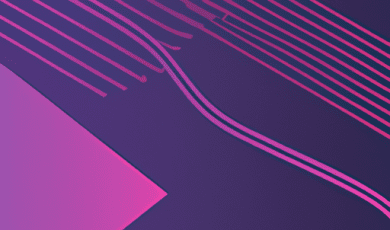
From trade shows and conferences to festivals and product launches, audiences now expect immersive, visually cohesive experiences from every event they attend. Organizers are under pressure to deliver striking branding, unified visual identities, and tailored content at scale—often with limited time and budget. That’s where smart, accessible technology steps in, reshaping how teams plan, design, and execute every visual touchpoint.
Modern AI tools support event professionals in creating on-brand visuals faster, aligning stakeholder feedback, and optimizing assets for multiple channels without sacrificing quality. Instead of replacing human creativity, these platforms act as powerful accelerators, giving marketers, designers, and producers more bandwidth to focus on strategy and storytelling while the tech handles the heavy lifting.
1. Rapid Concept Development for Event Identity
Developing a fresh visual identity for each event—logo variants, color palettes, typography, and mood boards—can take weeks. Intelligent design platforms drastically compress this timeline by generating multiple concept directions in minutes based on your brief. You can feed in event themes, target audience profiles, or even example imagery to receive a range of creative starting points.
This speeds up early-stage brainstorming and helps stakeholders visualize options faster. Teams can narrow down on a direction, then refine manually to ensure the final look remains distinct and brand-appropriate, rather than generic.
2. Consistent Branding Across All Event Touchpoints
Maintaining visual consistency across signage, stage backdrops, presentation decks, social posts, registration pages, and printed materials is one of the biggest branding challenges. Intelligent design systems can auto-apply brand guidelines (colors, fonts, logos, layout rules) to diverse assets, dramatically reducing human error.
Templates can be generated and then locked so that on-site teams, vendors, and partners only customize approved elements such as dates, speaker names, or sponsor logos. This way, everything from lanyards to LED walls carries the same visual DNA, reinforcing recognition and professionalism.
3. High-Quality Visuals Without a Full Design Team
Not every event has a dedicated designer or a big creative budget. Intelligent visual generators can turn basic prompts into high-resolution graphics, illustrations, photo-style imagery, and icon sets that suit the event narrative. Whether you need background visuals for a stage screen or illustrations for a workshop, you can generate a variety of options quickly.
Organizers can then select, lightly edit, or combine these elements to craft bespoke visuals—even if they don’t have advanced design skills. This democratizes creative production and allows smaller teams to compete visually with much larger events.
4. Personalized Visuals for Different Audience Segments
Personalization is no longer just about email subject lines. Event branding can adapt to different audience types, ticket tiers, or content tracks. Intelligent systems can help generate variations of banners, email headers, badges, and social media visuals tailored to specific attendee groups—corporate VIPs, students, partners, or speakers—while still staying true to the overall brand.
This level of nuance makes communications feel more relevant and premium. For example, VIP attendees might receive more luxurious visual treatments, while student-oriented sessions feature more playful and energetic styling.
5. Real-Time Visual Adaptation During the Event
Events are live, dynamic environments. Schedules change, sessions run late, speakers get swapped, or unexpected content surfaces during the day. Intelligent automation tools can quickly generate or update visuals on demand for display screens, digital signage, or live social feeds without sending everything back to a design agency.
This agility means that last-minute changes won’t break the visual consistency of your event. Organizers can update titles, speaker photos, and sponsor placements in real time while keeping everything aligned with the original visual identity.
6. Smarter Social Media Assets Before, During, and After
Social media is where much of your event’s story is told. Intelligent creative assistants can automate the production of event countdown posts, speaker spotlights, agenda highlights, quote cards, and recap graphics in multiple aspect ratios and layouts optimized for each platform.
They can also identify high-performing formats based on previous campaigns, suggesting color schemes or image compositions that are more likely to attract engagement. This ensures that both the visuals and the distribution strategy are working together for maximum visibility.
7. Enhanced Speaker and Sponsor Branding
Speakers and sponsors expect strong representation at modern events. Intelligent design platforms help create tailored assets quickly: branded speaker cards, social tiles featuring headshots and talk titles, sponsor showcase slides, and booth visuals that integrate both event and sponsor branding.
Instead of manually building each individual asset, organizers can define layouts once and generate variations automatically. This not only saves time but also reduces the risk of inconsistent branding or misaligned logos.
8. Data-Driven Optimization of Event Visuals
Once the event is over, many organizers move on to the next project without deeply analyzing how their visuals performed. Intelligent analytics can change that by examining which designs drove registrations, improved click-through rates, or generated more social engagement.
Over time, this feedback loop lets teams refine color choices, image styles, typography, or messaging for future events. The result is evolutionary improvement where each event’s branding is more effective than the last, informed by actual audience behavior, not just gut feeling.
9. Efficient Localization for Global Events
For events held in multiple regions or languages, localization is critical. Intelligent translation and layout systems can help reflow text, adapt visuals for right-to-left reading, and adjust cultural imagery while preserving the core brand elements.
This keeps your global branding unified yet sensitive to regional differences. You avoid the common pitfalls of inconsistent translations or visuals that feel out of place in certain markets, all while keeping production times manageable.
10. Reducing Waste and Maximizing Reusable Assets
Many event visuals are created once and never used again. Intelligent asset management can categorize, tag, and suggest reuse of past banners, icons, illustrations, and layouts for future events or related campaigns. Variants can be generated automatically to fit new dates, themes, or venues.
This cuts down on repetitive work and makes it easier to maintain a long-term, recognizable visual identity across an entire event series or brand portfolio.
Conclusion: Pair Human Creativity with Intelligent Support
Visual impact is now a core part of how attendees judge an event’s value and professionalism. Intelligent creative platforms do not replace the insight of marketers, designers, and producers; they amplify it. By taking over repetitive layout tasks, speeding up concept development, enabling rapid personalization, and providing data-backed insights, these systems give teams more freedom to craft memorable experiences.
For organizers aiming to future-proof their events, integrating intelligent visual workflows is less about chasing a trend and more about building a flexible, scalable creative engine. With the right balance between human direction and automated support, every event—no matter its size—can deliver cohesive, compelling branding that resonates long after the lights go down.








